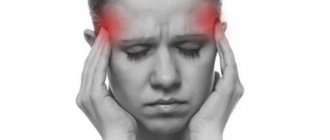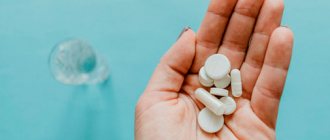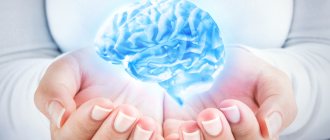Intoxication of the body is a general concept that characterizes poisoning with psychoactive and other substances. It implies a whole range of symptoms that develop against the background of poisoning. Intoxication can be determined both by external manifestations and symptoms, and by laboratory tests in some cases.
According to the WHO, “the term is most often used in relation to alcohol consumption - its equivalent in everyday speech is “intoxication”” (https://www.who.int/substance_abuse/terminology/acute_intox/ru/). However, it is important to understand that such a diagnosis can only be the main one in cases where poisoning is not associated with other disorders caused by the use of alcohol or psychoactive substances. In other words, the symptoms of one-time alcohol poisoning or accidental ingestion of toxic substances can be called intoxication. With constant intentional use, we will be talking about a dependence syndrome or a psychotic disorder.
There are many toxic components and types of intoxication that are not associated with drinking alcoholic beverages. Therefore, a classification was developed that determines the route of entry of harmful substances into the body and the mechanisms of development of poisoning.
Content:
- The main causes of asthenic syndrome after coronavirus: 1.1. Asthenia: somatic or mental disorder?
- Features of the clinical course of asthenia after Covid.
- Diagnostic principles: 3.1. Indications for emergency medical consultation.
- How to treat asthenic syndrome after covid: 4.1. Nutrition correction. 4.2. Restoring tolerance to physical activity. 4.3. Drug therapy.
According to doctors, residual symptoms after recovery from COVID-19 can persist for quite a long time. But the most unpleasant and exhausting (primarily psychologically) is the feeling of constant fatigue, weakness and loss of strength. How serious are these symptoms? Is there a way to quickly return to your normal lifestyle?
Treatment
Help before diagnosis
Cold sweat can be a sign of various diseases, so only a doctor can determine the exact causes of unpleasant symptoms. Until the cause of sweating is determined, it is recommended to regularly take a hygienic shower and change bed linen more often. For severe sweating, sedatives are used to normalize the functioning of the nervous system. If cold sweat occurs against the background of severe weakness or dizziness, the patient needs to be seated, air access must be provided, and in case of fainting, ammonia should be given to sniff.
First aid for critical conditions
Conservative therapy
Medical tactics depend on the main cause of excessive sweating. In critical conditions, resuscitation measures, oxygen support and the administration of infusion glucose-saline solutions are required. In case of satisfactory condition, drug therapy is carried out. Cold sweat caused by autonomic dysfunction is treated using physiotherapeutic methods and psychotherapy. The treatment regimen may include the following groups of drugs:
- Sedatives
. The remedies are effective when cold sweat is associated with disorders of the nervous system. Both herbal and synthetic medicines are used. In difficult situations, they resort to “daytime” tranquilizers. - Analgesics
. The occurrence of cold sticky sweat associated with pain requires the prescription of non-narcotic painkillers. For severe pain and traumatic shock, opioid analgesics are used. - Antibacterial drugs
. Medicines help eliminate sweating associated with infectious diseases. For tuberculosis, specific long-term treatment regimens are used with combinations of several anti-tuberculosis drugs. - Thrombolytics
. The drugs are prescribed to patients with myocardial infarction, which causes cold sweat. They allow you to restore blood supply to the heart muscle and significantly shorten the period of convalescence.
The main causes of asthenic syndrome after coronavirus
Weakness and loss of strength after suffering from COVID-19 are associated primarily with the peculiarities of the pathogenesis of this disease. The fact is that the causative agent of the infection is distinguished by its tropism for specific receptors of cell membranes, which are called ACE 2 (angiotensin-converting enzyme of the second type). The virus “attaches” to it using the S-protein (in its spatial structure it resembles a spike, so its name comes from the English word “stick”). After this, the pathogen easily penetrates the cell, its outer shell, the capsid, is destroyed, and viral RNA is released.
Further division (replication) of the coronavirus infection pathogen occurs with the help of cellular organelles; roughly speaking, the cell ceases to perform its functions and “works” only on the virus. After replication is completed, “free” RNA penetrates into the intercellular space and the cycle repeats again.
Initially, when doctors “worked” with the first patients, experts were convinced that such pathological changes occur only in the lung tissue. However, as information accumulated, it was found that covid can also penetrate the neurons of the brain, liver, kidneys, blood vessels, and smooth muscle tissue. This explained the rapid development of multiple organ failure in the acute phase of the pathology and various, often unexpected complications after coronavirus.
Thus, after recovery, cases of heart attacks, strokes, and lesions of the urinary system (pyelonephritis and glomerulonephritis, renal failure) were recorded. One of the specific symptoms of “corona” is the loss of smell and taste, which is also associated with damage to the central nervous system. And an analysis of data obtained from different countries showed that the frequency of such complications exceeds 70%.
But one of the most common residual symptoms remains severe weakness after coronavirus. In most patients who have had an infection, its pathogenetic cause is:
- direct damage to nervous system cells;
- consequences of severe intoxication: the immune system reacts sharply to infection, immune defense processes are accompanied by metabolic disorders, a massive release of toxins into the blood;
- violations of the filtration function of the liver due to side effects of antibacterial and antiviral drugs used to treat Covid;
- loss of appetite, and even more so - transfer of the patient to parenteral nutrition in intensive care, artificial ventilation and intensive drug therapy;
- oxygen starvation: in severe cases, saturation decreases to critical levels, but even after suffering from coronavirus, hypoxia persists due to fibrosis of the lung tissue.
Asthenia: somatic or mental disorder?
Covid is not only physiological, but also severe psychological stress for the body. Daily news is sometimes more reminiscent of reports from a war zone, unified treatment protocols have not been fully developed, and the rather high mortality rate of COVID-19 has already been confirmed (especially in patients at risk).
A positive test result, long-term, physically and financially debilitating therapy, and a severe clinical picture very often become the cause of depressive and anxiety disorders. And one of the “classic” symptoms of such psycho-emotional disorders is weakness and loss of strength. The likelihood of such a scenario is higher in women, people exposed to stress factors, prone to hypochondria, anxiety, and the elderly.
Causes of cold sweat
Severe stress
The body’s protective reaction to any stressful situation is the release of hormones from the adrenal medulla (mainly adrenaline). This substance constricts the blood vessels of the skin and activates the sweat glands. A person feels profuse cold sweat, which appears in the form of drops, often in the head area, and sometimes can flow down in streams. This manifestation is typical for severe emotional shocks. Short-term sweating during stress is normal, but when it is combined with dizziness or fainting, medical attention is needed.
Migraine
A person breaks into a cold sweat at the height of a painful attack. In addition to severe headaches, the patient feels lightheaded, weak, and general sweating is observed. Your hands and feet are cold and clammy, and sweat may run down your face and neck. This condition persists throughout the migraine attack and disappears on its own after the pain stops. Severe pain provokes excess production of adrenaline, which causes sweating. Unpleasant symptoms intensify when exposed to light and sound stimuli.
Vegetovascular dystonia (VSD)
This is a common cause of cold sweat, especially in young, emotionally labile patients. A person with VSD reports that bouts of excessive sweating vary in frequency, from several times a month to several times a day. Sweating is provoked by staying in a stuffy room and excitement. Patients note that the symptom is combined with severe weakness, dizziness, and some people feel like they are going to faint. Cold sweat is released throughout the body, the most pronounced sweating is the palms, head, and armpits.
Diabetes
In patients suffering from diabetes, cold sweating most often develops against the background of a decrease in blood glucose levels. Often, the symptom is observed during long breaks between meals or erroneous administration of large amounts of insulin. First, a strong feeling of hunger is felt, then sweat profusely appears on the face and torso, while the limbs are very pale and cold. Increased sweating is sometimes accompanied by motor agitation and a feeling of fear. The condition requires emergency care, as hypoglycemia can progress to coma.
Cardiac pathology
Cold sticky sweat, which is caused by large amounts of stress hormones entering the blood, appears on the skin during myocardial infarction. The symptom appears against a background of sharp chest pain radiating to the shoulder blade or left arm. In addition to pain, severe weakness, coldness of the extremities are felt, and cold sweat appears on the face and body. The patient is very pale, verbal reactions may be inhibited. Sometimes the cause of cold sweat is the development of acute heart failure with a sharp drop in pressure and activation of the sympathetic nervous system.
Bleeding
The loss of a large amount of blood (more than 10% of the total volume) is always accompanied by a violation of the general condition. With external bleeding from large vessels, cold sweat occurs immediately after injury; its appearance is caused by both neurohumoral disorders and strong emotional shock from the sight of blood. With massive internal bleeding, hemorrhages in the abdominal or pleural cavities, sticky sweat, sudden coldness of the skin, and diffuse cyanosis are observed. Excessive blood loss can lead to loss of consciousness.
Infectious diseases
Cold sweats usually occur before going to bed, or the patient wakes up at night with severe chills and notices increased sweating. The development of the symptom is associated with intoxication of the body by particles of bacterial or viral agents, and an increase in body temperature. With some infections, complaints of prolonged perspiration (more than 1 month) and coldness of the extremities are typical. Profuse sweat can be combined with muscle tremors and weakness. Cold sweating is characteristic of diseases such as:
- Bacterial infections
: pneumonia, tuberculosis, sepsis, etc. - Viral processes
: influenza, infectious mononucleosis, hemorrhagic fever (Crimea-Congo, Marburg, Ebola). - Parasitic infestations
: malaria, toxoplasmosis. - HIV infection
.
Withdrawal syndrome
Profuse cold sweats, which are mainly observed at night, occur in people addicted to alcohol and drugs. Perspiration appears 2-3 days after stopping the use of these psychoactive substances. Sometimes the sweating is so severe that the sheets and pillowcases become soaked through, forcing a person suffering from withdrawal symptoms to change their bed linen in the middle of the night. Increased sweating is accompanied by aches and burning throughout the body, weakness, and severe headaches. Characterized by irritability and emotional instability.
Emergency situations
There are many acute conditions that can cause cold sweats. Perspiration always appears with severe damage to internal organs, in which nervous regulation changes and a sharp release of biologically active compounds into the blood occurs. In this case, the skin turns sharply pale, the nasolabial triangle, nails, and fingertips acquire a bluish tint. Sticky sweat appears all over the body. Associated symptoms depend on the cause that provoked the appearance of cold sweat. With profuse sweating and coldness of the extremities occurs:
- Critical conditions
: acute respiratory or liver failure, renal colic. - Gastrointestinal pathology
: peritonitis, strangulated hernia, thrombosis of mesenteric vessels. - Diseases of the pelvic organs
: ovarian apoplexy, tubal pregnancy, uterine perforation. - Neurological disorders
: concussion, subdural or epidural hematomas, stroke.
Rare causes
- Oncological diseases
: lymphogranulomatosis, non-Hodgkin's lymphoma, acute and chronic leukemia. - Idiopathic hyperhidrosis
. - Endocrine pathology
: hypothyroidism, chronic adrenal insufficiency. - Heart rhythm disturbances
: Morgagni-Adams-Stokes syndrome, paroxysmal tachycardia, long QT interval syndrome.
Features of the clinical course of asthenia after Covid
From a medical point of view, asthenic syndrome is the body’s reaction to a condition fraught with loss of energy resources. And a decrease in activity is a universal biological mechanism for preserving life potential according to the principle: less activity means less need for energy.
The following symptoms are characteristic of asthenic syndrome:
- muscle weakness;
- drowsiness;
- decreased endurance;
- deterioration of memory, attention, ability to concentrate, absent-mindedness;
- pain in the chest, spine, abdomen;
- tachycardia, shortness of breath;
- anxiety, mood swings, fears, suspiciousness - a person constantly listens to his own feelings, fears a relapse of the disease, which further aggravates his well-being;
- weight loss;
- in men - erectile dysfunction and decreased libido, in women - menstrual irregularities;
- increased sensitivity to light, sound and other external stimuli.
Important! Unlike normal, physiological fatigue, in this case the listed symptoms do not go away after sleep and rest.
Very heavy sweating after coronavirus is also typical. Hyperhidrosis manifests itself even with minimal physical activity, sometimes at rest.
What to do to restore strength after coronavirus?
It is necessary to find out the reason why a recovered patient experiences weakness and increased fatigue without obvious positive dynamics - this can be either ordinary long-term physical inactivity in isolation (the habit of bed rest), or diseases of internal organs without obvious symptoms. If the diagnosis reveals the latter, it is necessary to consult a specialized doctor who will prescribe therapy.
Patients who have suffered viral pneumonia with lung damage need to restore their previous lung capacity - it is recommended to do breathing exercises (see, for example, Strelnikova’s set of exercises), walk in the fresh air, and engage in moderate physical activity (yoga, cycling).
The patient's diet after pneumonia should be rich in antioxidants and vitamins. Swimming in the pool, cold water pond and bathhouse (sauna) is prohibited. Spending time in the sun will help raise the level of important vitamin D. A stay at a sanatorium is recommended.
Drinking alcohol and smoking for a patient with signs of viral pneumonia (even if there is no longer a virus in the body) significantly inhibits recovery processes, suppresses the immune system and can lead to the development of complications such as pulmonary fibrosis.
Diagnostic principles
Before starting treatment, it is important to differentiate mental disorders from somatic ones. Identifying the root cause of asthenia after coronavirus is the basis for planning therapy. In addition, the possibility of secondary bacterial infection, relapse or reinfection should be excluded. To do this, it is recommended to undergo a number of clinical tests and laboratory tests:
- clinical and biochemical blood test;
- urine examination for the presence of protein, leukocytes and red blood cells (may indicate the development of kidney pathology);
- Covid test (by PCR and/or ELISA, although many doctors now talk about the likelihood of false-positive PCR results due to the “reaction” of the test systems used to viral particles circulating in the blood);
- ECG, according to indications - Echo-CG;
- X-ray and/or tomography of the chest;
- Ultrasound of internal organs (kidneys, liver, pancreas);
- coagulogram, D-dimer test to determine the risk of thrombotic complications.
If weakness and fatigue persist after coronavirus, regular measurement of saturation (oxygen saturation level in the blood) is recommended. To avoid false results, it is not recommended to use fitness bracelets, etc., of dubious quality. Only certified medical devices with attached detailed instructions are suitable.
Indications for emergency medical consultation
Weakness after Covid is quite normal, but the time frame for restoring well-being and performance varies from person to person and ranges from 2-3 weeks to 1-2 months. However, in some cases, medical attention may be required. Attention should be paid to the following symptoms:
- decrease in saturation to 95% or less;
- shortness of breath and pain in the chest, which intensifies with coughing, exertion, or taking a deep breath;
- cough;
- increased body temperature;
- a sharp deterioration in health.
Diagnostic methods
Headache, nausea and vomiting, chills and fever are signs of infectious and non-infectious diseases that require different treatment methods. To prescribe the optimal regimen, it is important to determine the cause of these symptoms. After the examination, the doctor prescribes additional examinations that will help make a final diagnosis:
- Ultrasound of the stomach and intestines is the first way to determine inflammatory processes;
- endoscopic examination of the mucous membrane of the stomach and intestines;
- magnetic resonance or computed tomography – methods for diagnosing the brain to detect tumors;
- measuring blood pressure during the day;
- Ultrasound of the heart, electrocardiography - prescribed for suspected heart failure and other diseases;
- blood tests - will help determine inflammatory diseases and dysfunction of individual organs;
- specific blood tests to determine glucose levels.
At the Clinical Brain Institute, the examination regimen is prescribed individually. It does not include any unnecessary, insufficiently informative tests that will not help assess the overall picture of the disease. Modern equipment allows you to obtain the most accurate data necessary for diagnosis.
How to treat asthenic syndrome after covid
In order to get rid of the consequences of coronavirus as soon as possible, you must strictly adhere to all doctor’s prescriptions, take medications not prescribed by the doctor, and changing the dosage is possible only after a preliminary consultation.
Nutrition correction
The target calorie intake is 30 kcal/kg, but after a stay in intensive care, the amount of food consumed must be increased very carefully. The daily requirement for protein is up to 1 g/kg. The menu is selected individually, taking into account the general condition, concomitant diseases and the presence of allergies to certain products.
If the patient cannot “gain” the necessary calories and protein from the daily diet, additional nutritional supplements are prescribed. They should be taken for a minimum of 4-5 weeks.
Restoring exercise tolerance
Despite the weakness after illness, the patient needs to regularly perform a course of exercises (preferably with monitoring of saturation, blood pressure and pulse). Cardio exercises are carried out 4-6 times a week, strength training - 2-3 times. Naturally, we are not talking about serious sports loads.
Exercises on an exercise bike or treadmill (they can be replaced by a walk in the fresh air), squats, simplified versions of the “plank,” and lunges are suitable. You need to start with a minimum load and gradually increase it. Until your well-being normalizes and weakness disappears after coronavirus, you should abandon dumbbells, weights and other sports equipment - it is better to increase the number of approaches or the duration of the session.
Drug therapy
In addition to the drugs prescribed by a pulmonologist or infectious disease specialist to restore respiratory function, activity of the cardiovascular system and prevent somatic complications, the following are prescribed:
- vitamins;
- antioxidants;
- restoratives;
- medications to correct metabolic disorders;
- medications to restore intestinal microflora and normal digestion;
- hepatoprotectors;
- sedatives, antidepressants (for symptoms of mental disorders), etc.
You can cope with asthenia on your own, but it will take a lot of time, and it is not a fact that you will be able to avoid numerous complications. Therefore, experts recommend undergoing a comprehensive recovery program in a rehabilitation center, where proper nutrition, rest, fresh air, doctor’s supervision, and various physical procedures are provided.
Treatment options
In most cases, treatment is carried out with medication. The patient is prescribed medications that will help get rid of the cause of nausea, chills, and headache. Surgery is only necessary in exceptional cases. The following methods are most often effective:
- painkillers – necessary to improve well-being during acute headaches;
- substances to relieve intoxication (sorbents) - prescribed for food poisoning;
- antidotes - specific compounds that act as an antidote for certain types of poisoning;
- drugs to restore normal intestinal microflora - effective after intoxication, long-term use of antibiotics, diseases of the digestive system;
- anti-inflammatory drugs - the main stage of treatment of gastritis, pancreatitis, hepatitis and other diseases;
- specific antiviral therapy for viral hepatitis;
- a special diet is necessary to restore the functioning of the gastrointestinal tract.
At the Clinical Brain Institute, you can get recommendations from leading experts, as well as receive treatment in a hospital setting. Drugs are prescribed individually, taking into account the patient’s age and exact diagnosis, medical history and other factors. It is important to take them according to the prescribed regimen, as well as follow all other recommendations at home.
Literature:
- Ivanova G.E., Shmonin A.A., Maltseva M.N., Mishina I.E. and others. Rehabilitation assistance during the epidemic of the new coronavirus infection COVID-19 at the first, second and third stages of medical rehabilitation. — Physical and rehabilitation medicine, medical rehabilitation, 2, 2021.
- Shakirova I.N., Dyukova G.M. Asthenia is an interdisciplinary problem. State Scientific Center Institute of Immunology. PMGMU named after. THEM. Sechenov, Moscow. — Difficult Patient, No. 5, T. 10, 2012.
- Yudelson Ya.B., Makarova M.A., Kugeleva A.O. Treatment of functional asthenia. - Bulletin of the Smolensk State Medical Academy, 2003, No. 4.
- Belopasov V.V., Yashu Y., Samoilova E.M., Baklaushev V.P. Nervous system damage due to COVID-19. - Clinical practice, T. 11, No. 2, 2021.
The text was checked by expert doctors: Head of the socio-psychological service of the Alkoklinik MC, psychologist Yu.P. Baranova, L.A. Serova, a psychiatrist-narcologist.
CAN'T FIND THE ANSWER?
Consult a specialist
Or call: +7 (495) 798-30-80
Call! We work around the clock!









